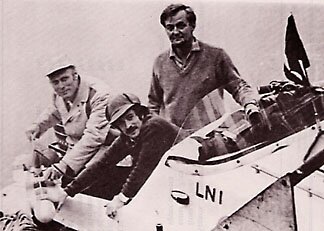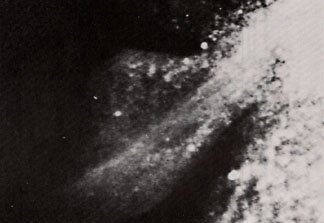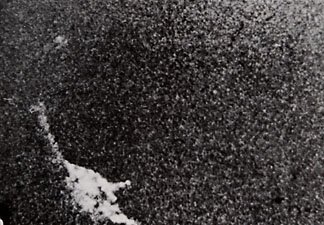
|
Tim Dinsdale (left), one of the leaders of the Loch Ness Investigation; Martin Klein (center), President of Klein Assoc.; and Robert Rines, President of the Academy of Applied Science, prepare to launch side-scan sonar tow vehicle.
Marty Klein's side-scan "eyes" being towed underwater.
Recorder trace showing large moving object(s) in Loch Ness. |
|
Loch Ness Survey surface photography team with Academy members.
One of the three subsurface "flipper" photos obtained in August 1972, during simultaneous and totally consistent sonar tracking of large unknown target, using an Edgerton elapsed-time strobe camera.
Subsurface "full body" photo obtained June, 1975. The upper part is interpreted to be a long neck and head extending from a bulky body.
Subsurface "full body" photo obtained June, 1975, of what is intrepreted to be the head of a large animal. Had the fast sonar-triggered, elapsed-time strobe technique now being used been in operation in 1975, there would have been several photographs of the "head" taken at different angles. This may have aided identification. |





